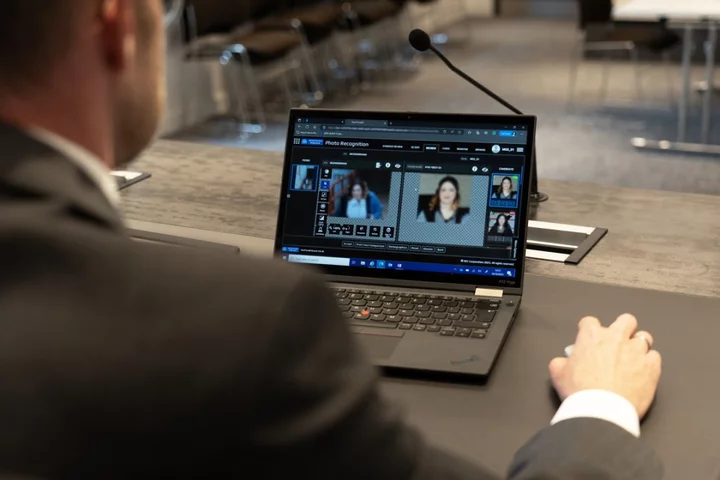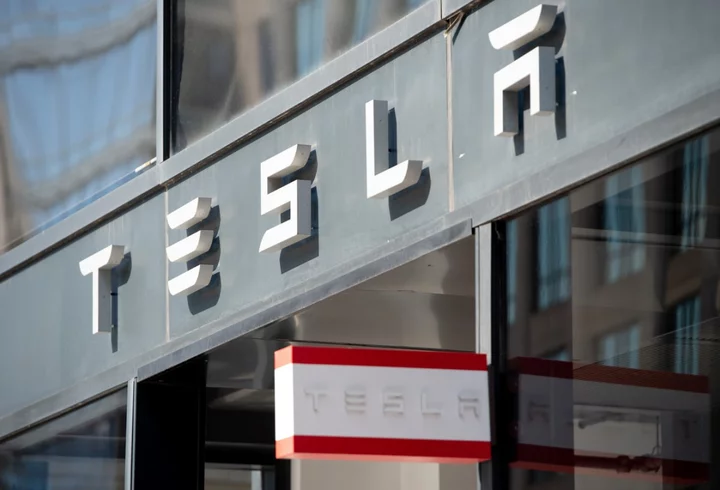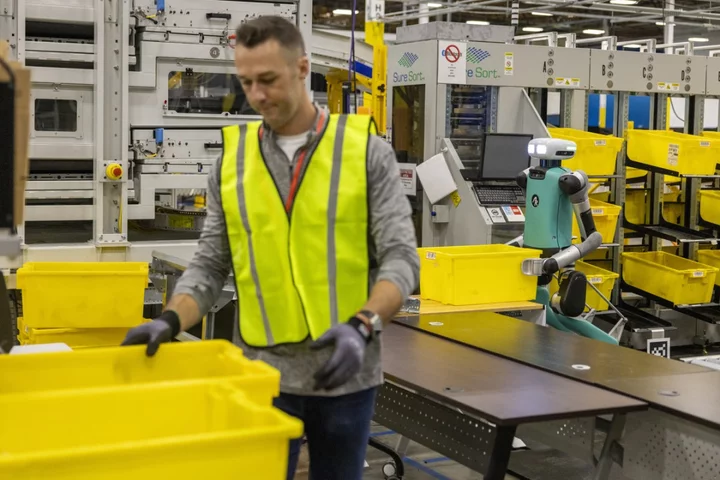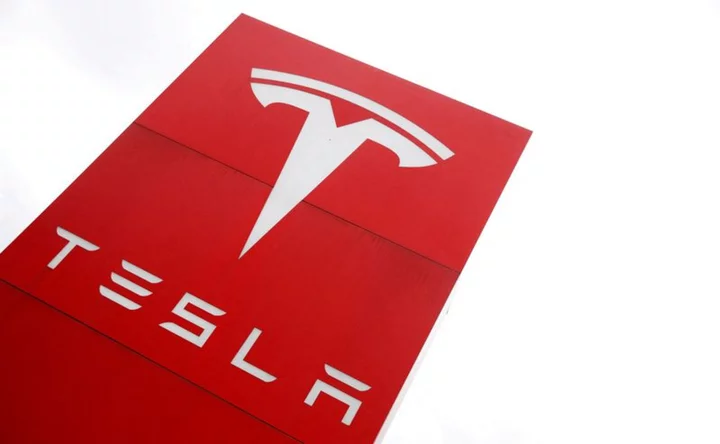
‘Game-changing’ facial recognition technology catches prolific shoplifters
Britain’s biggest police force is using “game-changing” facial recognition technology to catch prolific shoplifters. The Metropolitan Police asked 12 retailers to provide images of 30 of the worst offenders who steal from their shops in a pilot of the new software. They were compared against the force’s custody shots, and of 302 images submitted, 149 came up as positive matches. Those matches are now being investigated further with a view to building criminal cases. The software uses biometric measures of a person’s face and works even if part of their face is covered. It takes around 60 seconds to find a match. Commissioner Sir Mark Rowley said: “We’re working with shops across the capital to target and track down criminals in a way we never have before. “We’re pushing the boundaries and using innovation and technology to rapidly identify criminals. “The results we’ve seen so far are game-changing. The use of facial recognition in this way could revolutionise how we investigate and solve crime.” He claimed that most of the prolific offenders were involved in other, more serious criminal activity. “What’s most powerful is what we’ve learned about those involved in this offending so far. It’s clear the majority are career criminals involved in serious crime,” Sir Mark said. “This data and information helps us focus our efforts in an even more precise way than we originally anticipated. “Through this tactic we’re not only improving how we protect shops and support the business community, we’re stepping further forward in identifying and tracking down serious criminals and protecting all of London’s communities. “The scale of business crime in London is huge. To be successful we have to be precise in our approach and this is a really promising step forward.” Met police last year." data-source=""> Chief executive of the Association of Convenience stores James Lowman said while the technology could save police time, there is still a challenge in getting offenders off the street. He said: “Using artificial intelligence to identify prolific offenders can be an effective way of drastically reducing the amount of police time it takes to make links between crimes committed against different businesses locally. “Whether its artificial intelligence or local intelligence that leads to criminals being identified, the real challenge remains apprehending these offenders and getting them off the streets.” The Met started using the software in August and began the retail pilot in late September. The new system can use images from CCTV, dashcams, doorbell cameras or phones. It uses the same algorithm as the Met’s live facial recognition technology, about which there have been well-publicised concerns over potential bias. Lindsey Chiswick, director of intelligence for the Met and national policing lead on facial recognition, said the algorithm has been independently tested by the National Physical Laboratory. She said: “Facial recognition technology, which is able to match faces after the event, has actually been around for quite a few years. “What’s changed and what is improving all the time, and in the last few years with real speed, is the accuracy of the algorithm. And that’s the real game changer here. “With this technology, it’s an algorithm that we’ve independently tested through the National Physical Laboratory so we have assurance it’s 100% accurate when it comes to retrospective usage, and we understand how it works.” Around 50,000 shoplifting incidents were reported to the Met last year, estimated to be between 5% and 10% of the offences that are actually committed. Emmanuelle Andrews, from human rights charity Liberty that has campaigned against the use of facial recognition, said: “Facial recognition has no place on our streets, in our shops – or in any other areas of our lives. “This technology threatens our privacy and stifles free speech – and we should all be worried about moves to expand its reach. “We’re also concerned about the creep of facial recognition technology into other areas of policing. “Let’s be clear: we cannot rely on tech to solve deep societal problems, this is an unjustified expansion of state surveillance and there are numerous alternatives.” Read More Facial recognition firm Clearview AI overturns UK data privacy fine Sadiq Khan, Met Commissioner to ask phone companies to ‘design out’ theft Microsoft gets go-ahead to buy Call of Duty maker Activision Incels using TikTok to spread ‘hateful beliefs’, research suggests Duke and Duchess of Sussex call for overhaul of social media Google to trial AI in UK traffic light systems to reduce stop-and-go emissions
2023-10-19 17:50

WhatsApp update changes how billions log in to messaging app
WhatsApp is changing the way billions of users log into the messaging app, ditching passwords and two-factor authentication in favour of quicker and more secure passkeys. The move is part of a major shift within the tech industry to move away from decades-old password technology and replace it with the more modern passkey format, which combines biometric information like fingerprints with a simple numeric code in order to identify people. A similar switch was recently announced by Google, which will introduce passkeys to its apps like Maps, Search and YouTube. WhatsApp’s update will only impact Android users to begin with. “Passkeys are a new way to log back into your account,” said Will Cathcart, who heads WhatsApp. “This is a more secure way of confirming it’s really you – and gives you an added layer of security.” WhatsApp is also rolling out self-destructing voice notes to users as part of new measures to improve privacy on the world’s most popular messaging app. The update is currently only available for beta tester users who have the latest version of WhatsApp installed on their phone or computer, though it is expected to eventually be introduced for all users. With more than 2.7 billion users worldwide – the majority of which on Android devices – WhatsApp updates typically need to be introduced gradually in order to make sure any potential security bugs do not have a critical impact. The self-destructing audio messages, first spotted by WhatsApp feature tracker Wabetainfo, is compatible with both Android and iOS users, though no date has been given for when a wider roller out might be expected. WhatsApp does not comment on release schedules for feature updates unless they relate to security. “After sending the voice note with view once mode enabled, you won’t be able to listen to it and the recipient can no longer listen to the voice note after dismissing it,” Wabetainfo noted. “This mode effectively minimises the chances of unauthorised access or later listening, providing a new layer of privacy for sensitive and confidential information.” The latest update follows recently added features like ‘Channels’, which allow people to follow celebrities and companies within the app, and a ‘Create’ button that gives users the ability to make custom art on the platform. The Create feature brings generative artificial intelligence to WhatsApp for the first time, and means users do not require external tools or specific design skills to create the stickers. Instead, the custom stickers can be produced using simple text-based prompts, similar to other AI image generators like Midjourney and OpenAI’s Dall-E. Read More Facebook and Instagram users face monthly fee for ad-free version Meta launches AI chatbots with ‘personalities’ to take on ChatGPT Viral WhatsApp warning of cyberattack targeting Jewish people is fake Amazon trials humanoid robots to see if they can help staff warehouses Tesla’s profits dip as Musk goes on rant about staff working from home
2023-10-19 17:25

Pets pose a serious health threat that we've all been overlooking
While millions of people own cats and dogs and wouldn’t dream of getting rid of them, pets pose a health risk to humans that is massively overlooked, according to a new study. Since the Covid-19 pandemic swept the world with devastating impact, it has become evident how much of a risk new viruses can pose to our well-being. However, experts are warning that it is not just the wildlife trade or exotic animals that we should be concerned about, as pets could also be sources of zoonotic diseases (which jump from animals to humans). Back garden pets, house pets, working animals and even rodents and pests could host new viruses that could affect humans, according to a new study. It warns that the urbanisation of our habitats and climate change will have an impact on diseases and their dynamics. The study was shared in Science Translational Medicine and penned by disease ecologist Amandine Gamble along with a group of colleagues, who gave examples of how companion animals (aka pets) and stray animals carried a risk of zoonotic spillover. While the risk is thought to be small, experts warn it is significantly underappreciated, especially given the frequent proximity human beings have to pets and strays. The study said: “These animals can play critical roles in zoonotic spillover by enabling the maintenance of a zoonotic pathogen, facilitating its spatial spread, acting as a bridge between otherwise unconnected species, or providing particular opportunities for its evolution.” While the zoonotic spillover that caused Covid-19 sparked a global pandemic, any instance of infection that jumps from animal to human is known as a zoonotic, regardless of the numbers affected. Pet parrots are a known transmitter of the Chlamydia psittaci bacterium to humans. Elsewhere, bats and horses are also known sources of zoonotic diseases. In terms of common household pets, cats can act as a link to a number of fatal diseases. The experts explained: “Numbers of infections are low, but plague is endemic in 17 western U.S. states, and many of the small mammals on which cats prey carry Y. pestis. “Consequently, outdoor cats and cats with incomplete veterinary care, combined with human interaction, suggest that cat-transmitted plague can be considered an increasing public health risk.” They conclude that “it is critical to implement surveillance programs allowing us to track changes in pathogen dynamics”. Sign up to our free Indy100 weekly newsletter Have your say in our news democracy. Click the upvote icon at the top of the page to help raise this article through the indy100 rankings.
2023-10-19 17:21

Science recreate mysterious ice found on Neptune that only melts at extreme temperatures
Five years ago, scientists managed to recreate what is known as superionic ice, in lab experiments for the first time. Superionic ice is believed to form within Uranus and Neptune as familiar materials are subjected to extreme pressures and heat, with iron atoms forming hot, black, heavy ice. But just last year researchers at several universities in the United States discovered a new phase of superionic ice. The discovery helps broaden our understanding of why Uranus and Neptune have off-kilter magnetic fields with multiple poles. Different to forms of water on Earth, the oxygen atoms in superionic ice are locked in a solid cubic lattice, while the ionised hydrogen atoms are loose, flowing through the lattice. This gives superionic ice conductive properties as well as raising its melting point, meaning the frozen water remains solid at temperatures up to 4704 Degree Celsius (8500 Fahrenheit). In this latest study, Stanford University's Arianna Gleason and colleagues blasted thin slivers of water, sandwiched between two diamond layers, with some extremely powerful lasers. "Recent discoveries of water-rich Neptune-like exoplanets require a more detailed understanding of the phase diagram of [water] at pressure–temperature conditions relevant to their planetary interiors," Gleason and colleagues explain in their paper, from January 2022 X-Ray diffraction revealed the hot, dense ice's crystal structure, and confirmed the ice crystals were in fact a new phase, distinct from the superionic ice that was observed in 2019. This newly discovered superionic ice, Ice XIX, has increased conductivity compared to its 2019 predecessor. The conductivity is important because it helps us understand why certain off-kilter magnetic fields are generated on planets such as Neptune and Uranus. You can read the paper, published in Scientific Reports here. Sign up to our free Indy100 weekly newsletter Have your say in our news democracy. Click the upvote icon at the top of the page to help raise this article through the indy100 rankings.
2023-10-19 16:53

Nokia says will cut up to 14,000 jobs
Nokia will slash up to 14,000 jobs in a major cost-cutting drive, it said in a statement on Thursday.
2023-10-19 14:19

Tesla’s profits dip as Elon Musk goes on rant against staff working from home
Electric car maker Tesla’s profits took a dive in the third quarter, according to an earnings call on Wednesday in which the company’s chief Elon Musk blamed staff working from home for being “detached from reality”. Tesla’s profits in Q3 of 2023 have plunged by over 40 per cent compared to the gains it made in the same period last year after the company slashed its car prices by around 25 per cent in an attempt to compete with other EV makers. The EV manufacturer reported a net profit of about $1.9bn for the time between July through September, which is a 44 percent drop from the $3.3bn it made in the same three-month period last year. While the company has seen a small increase in overall revenue of about $23bn from the $21bn the same time last year, the figures are still lower than Wall Street expectations. Mr Musk also dampened hopes of the company’s anticipated Cybertruck reviving profits in the near future, announcing that it would take at least 18 months for the truck to become profitable as it could go on sale only by the end of November. “There will be enormous challenges in reaching volume production with Cybertruck and making the Cybertruck cash flow positive,” the Tesla titan told investors and analysts in the earnings call. “The blood, sweat and tears that will be required to achieve that is just staggering,” he added. Over the last year, Tesla has slashed the prices of its cars by quarter to boost sales. Growing competition with the introduction of EVs by other car makers in the US, including BMW, Toyota, Mercedes, GM and Hyundai, has also coincided with Tesla’s share of vehicles in the EV market reducing in the last quarter. In the earnings call, Mr Musk also said staff working from home are taking advantage of those who cannot work from home. “Like... what about all the people that have to come to the factory and build the cars?” he asked. “Why did I sleep in the factory so many times? Because it mattered,” the Tesla chief said. Mr Musk echoed the statements he made in an interview with CNN earlier this year in which he called remote work “morally wrong”, arguing that it is unfair to those who cannot have the option. “Get off the goddamn moral high horse with the work-from-home bullshit,” he said. Tesla also pointed fingers at its reduction in production while it upgraded its factories as one of the factors behind the profit slump. It said it has also been making big investments in AI and “commissioned one of the world’s largest supercomputers.” “We have more than doubled the size of our AI training compute, accommodating for both our growing data set & Optimus, which is currently being trained for simple tasks through AI rather than hardcoded software, while its hardware continues to improve,” Tesla said. But all is not gloomy as the company says the first deliveries of its Cybertruck are scheduled for 30 November and Tesla’s Model Y remains the “best-selling vehicle of any kind” in Europe. Read More X begins charging new users to post as part of trial EU asks Elon Musk to ‘walk the talk’ on X/Twitter disinformation over Hamas attack AOC wants to ‘trade in’ her Tesla for union-made electric vehicle amid historic auto workers strike Amazon to start dropping packages into people’s gardens using drones in the UK Facebook has stopped working Facial recognition firm Clearview AI overturns UK data privacy fine
2023-10-19 14:16

Amazon trials humanoid robots to see if they can help staff warehouses
Amazon is testing whether humanoid robots that walk around with glowing eyes could help staff its warehouses. The company has in recent years added a host of new technologies as part of its Amazon Robotics arm, primarily using it in its warehouses, including arms and small carts that are able to help pack orders. It now has 750,000 robots working alongside employees, it said. This week it unveiled more of hose robots, including a system named Sequoia that helps pack its itinerary at those warehouses. But the most dramatic new robot was a system named Digit that is now being tested for Amazon’s operations. Amazon calls Digit a “mobile manipulator solution”, and pointed to the fact that they are able to move around and grasp items in ways that other robots aren’t. It does so in an uncannily human form, with glowing eyes in the front of its head and arms and legs that allow it to walk around. The system was built by Agility Robotics, which has a partnership with Amazon. It is 175cm tall, can work for 16 hours out of a day and has the ability to perceive people and crouch and squat, for instance. “Its size and shape are well suited for buildings that are designed for humans, and we believe that there is a big opportunity to scale a mobile manipulator solution, such as Digit, which can work collaboratively with employees,” Amazon said in an announcement. “Our initial use for this technology will be to help employees with tote recycling, a highly repetitive process of picking up and moving empty totes once inventory has been completely picked out of them.” Tye Brady, chief technologist at Amazon Robotics, said that he was more interested in how the humanoid form could allow for new kinds of mobility, such as using legs to walk over varied terrain, rather than having it mimic the look of humans. He also suggested that if the robot’s shape came to be a barrier to adoption then Amazon “can change that”. The robot is still in testing for now, in an attempt to understand how it might be used, and is not deployed in any of Amazon's normal operations. It may never actually be used, it suggested, if the project finds that such robots are not helpful. Amazon also committed to ensure “robotics are collaborative and support employees”. In an apparent attempt to allay concerns about the robots taking jobs and leaving its staff redundant, it pointed to the growth in new jobs that has come even as its investment in robotics has increased, and said that there were 700 new job categories that didn’t exist before that expansion. “From the hardware to the artificial intelligence embedded in our robotics, we are passionate about technology that makes the work experience of our employees safer, easier, and less repetitive,” Amazon committed. It said that the extra time saved with robots would allow employees to “take a step back” and evaluate how orders were being fulfilled, for instance. Amazon is just one of a range of companies looking at humanoid robots for logistical work. Tesla, for instance, has a system called “Optimus” which Elon Musk has suggested could eventually become its biggest business, but which is yet to actually be rolled out. Read More Amazon to start dropping packages into people’s gardens using drones in the UK Tesla’s profits dip as Musk goes on rant about staff working from home Facebook has stopped working
2023-10-19 14:15

SAP reaffirms cloud business outlook after Q3 misses forecast
(Reuters) -Business software maker SAP on Wednesday reaffirmed its full-year outlook for its key cloud business revenue after slightly missing
2023-10-19 13:48

Nokia to cut up to 14,000 jobs after sales drop 20%
By Supantha Mukherjee STOCKHOLM (Reuters) -Finnish telecom gear group Nokia on Thursday said it will cut up to 14,000 jobs
2023-10-19 13:21

Tesla CEO Musk raises alarm on interest rates, hesitates on Mexico factory
By Hyunjoo Jin, Akash Sriram and Joseph White (Reuters) -Tesla CEO Elon Musk said on Wednesday that he was concerned
2023-10-19 07:16

Musk considers removing X platform from Europe over EU law - Insider
Elon Musk, owner of social media platform X, is considering removing the service formerly called Twitter from Europe
2023-10-19 06:47

OpenAI in talks to sell shares at $86 billion valuation - Bloomberg News
ChatGPT creator OpenAI is in talks to sell existing employees' shares at an $86 billion valuation, Bloomberg News
2023-10-19 05:54
